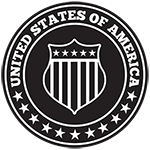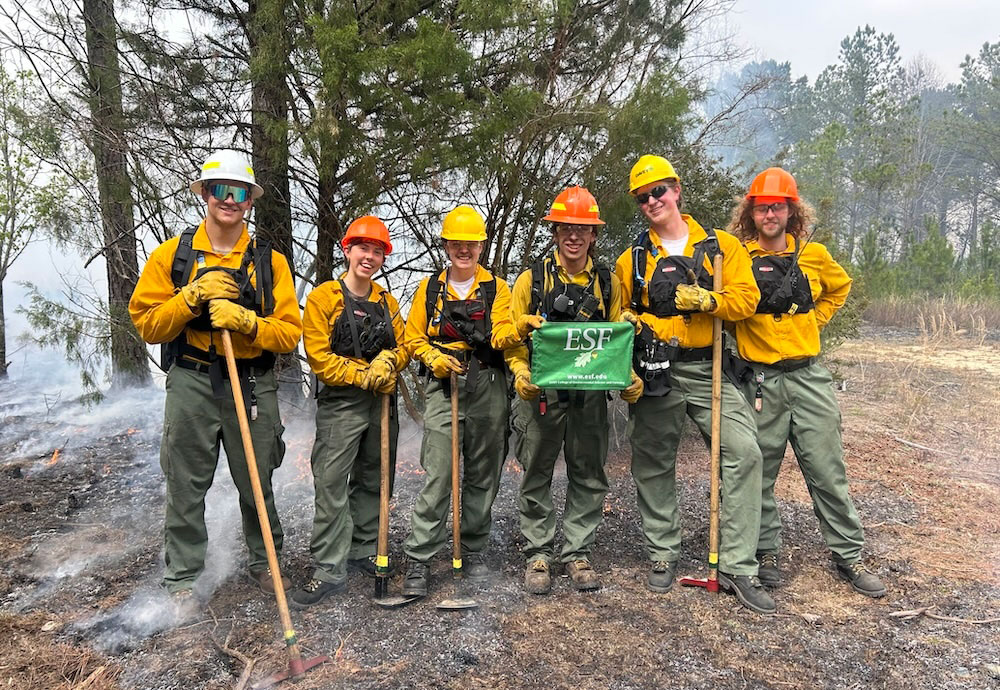Students from the SUNY College of Environmental Science and Forestry (ESF) chose to spend spring break in Georgia, engaging in prescribed burns — a forestry management practice that involves intentionally setting fires to promote forest health, support wildlife biodiversity, and increase resilience to future wildfires.
Led by graduate students Maria Loughran and Anna Welch, members of the Applied Forest and Fire Ecology Lab under Dr. Andrew Vander-Yacht, the six undergraduate students gained hands-on experience in fire operations and the fire ecology of the southeastern United States.
With more than 10 years of combined experience in prescribed and wildland fire, Loughran and Welch taught the students about fire operations and the expectations of working as part of a fire crew earlier in the spring semester. The students previously obtained certification as basic wildland firefighters through Vander-Yacht’s Fire Ecology and Management class on ESF’s main campus or at the College’s Ranger School in Wanakena, N.Y. As part of this certification, they completed a challenging pack test — walking three miles with 45 pounds in 45 minutes — to ensure their physical capacity to operate safely as wildland firefighters.
The ESF fire crew was hosted by The Nature Conservancy (TNC) and coordinated with the Georgia Forestry Commission and the Georgia Department of Natural Resources through the Interagency Burn Team. Over three days, they burned a total of 323 acres, primarily in mixed pine grasslands, to facilitate the restoration of longleaf and shortleaf pine.
“Many ecosystems of the southeastern United States are fire-dependent and benefit greatly from regular burning,” said Welch.
“These burns help reduce understory fuels, encourage pine regeneration, and promote herbaceous diversity, benefiting fire-dependent ecosystems in the southeast,” said Loughran.
The students took on various roles, including igniters using drip torches and holders ensuring the burn stayed within prepared containment lines. In one operation, a drone was used to drop small plastic balls filled with chemicals – powdered potassium permanganate – that ignited when they landed on the forest floor.
“The crew members valued the opportunity to learn and work alongside experienced landscape management professionals who use prescribed fire, particularly students pursuing careers in fire ecology or as wildland firefighters,” said Loughran.
Students also participated in field tours and orientation activities at the Chattahoochee Fall Line TNC management area, learning about the complex decisions involved in restoring ecosystems. They assisted with post-burn monitoring, measuring scorch height and fuel consumption to help land managers refine their strategies. Visits to Shenandoah National Park and the University of Georgia’s Fire Lab gave the students insights into fire management and ecosystem restoration.
“The ESF fire crew immersed themselves in fire and ecosystem management, engaging in all stages from pre-burn planning to post-burn assessments,” said Vander Yacht.
This hands-on experience has fueled student passion for fire ecology management; all have since assisted the Albany Pine Bush and New York Department of Environmental Conservation on local prescribed fires and have been instrumental in launching a Student Association of Fire Ecology (SAFE) Club on ESF’s campus.
“The hope is that future iterations of this spring break experience will continue to unite students dedicated to using prescribed fire to benefit fire-dependent forests,” said Vander Yacht.






